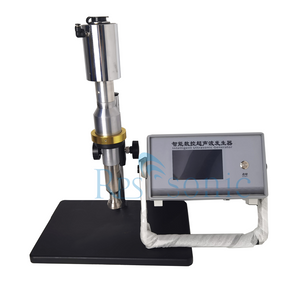Heat exchangers, condensers, reactors, storage tanks and other equipment are prone to scaling during production and operation. Scale will greatly reduce the operating efficiency of the equipment, greatly increase the energy consumption of the equipment, shorten the service life of the equipment, and cause frequent failures, which will bring serious hidden dangers to safe production.
In order to improve the heat exchange efficiency of heat exchanger condensers, ensure product quality, save energy, prevent or reduce corrosion of heat exchanger condensers, and increase the life of industrial equipment, the methods of online physical cleaning commonly used at present are: high-pressure water jet cleaning, scale inhibitor prevention, pickling, solid particle friction, ultrasonic high-frequency oscillation descaling (prevention), etc.
The ultrasonic high-frequency oscillation method has extremely obvious technical advantages:
1. Descaling and anti-scaling synchronization: equipment descaling and anti-scaling are carried out simultaneously, and the equipment can be in long-term operation.
2. Low power consumption: pulse circuit design, energy saving and power saving. No daily maintenance, service life of more than 15 years.
3. Triple automatic protection, safe and reliable: the equipment adopts triple automatic protection of overcurrent, overvoltage and overheating, intelligent control, safe and reliable.
4. Automatic control: Automatically monitor the working status of the transducer and the load status of the equipment, and respond in time.
5. Protect equipment: No chemical agents are required during the descaling and anti-scaling process, no corrosion, no interference, no pollution, and no radiation. Reduce the economic losses caused by equipment corrosion and shutdown, and increase the service life of the equipment.
6. Green and environmental protection: No pollution to the environment, no damage to operators and heat exchange equipment.
7. Reduce corporate budget: No need to stop production for chemical cleaning and other clumsy methods to descaling, reducing a lot of funds;
8. Easy installation: No need to change or destroy the boiler, heat exchanger and pipeline structure.
Ultrasonic descaling (anti-scaling) mechanism:
1. Dissolution: The generation of high-frequency oscillation can increase the dissolution capacity of the solution in the vessel. It can be understood that high-frequency oscillation can increase the solubility of the flowing liquid and the structure, destroy the conditions for the formation of scale, and alleviate the time of scale formation.
2. Loosening effect: High-frequency vibration acts on the liquid. Due to the high frequency, a force that tears apart the liquid molecular nucleus will be formed in the liquid, that is, the cavitation nucleus. When the cavitation nucleus grows to a certain size, it will break. The force generated by these ruptures hits the scale, which can crush the scale and suspend it on the surface, making the scale loose and easy to detach.
3. Stripping effect: Vibrating on the scale layer and the pipe wall, the speed difference is generated because the propagation speed of the vibration wave in the two is different, forming a relative breaking force on the interface between the structure and the pipe wall, resulting in a decrease in the bonding force between the scale-forming material and the pipe wall interface, so that the scale fatigues and loosens.
The principle is mainly reflected in the following aspects:
1. Cavitation: The energy of ultrasound directly produces a large number of cavities and bubbles in the processed fluid medium. When the sound pressure or sound intensity reaches a certain level, the bubbles will expand rapidly and then suddenly close. A strong pressure peak is generated within a certain range, and the local pressure peak can reach thousands of atmospheres. Under the action of peak pressure, the scale-forming substances are broken and suspended in the water, causing the natural scale layer to be destroyed and easy to fall off. The purpose of ultrasonic descaling.
2. Shear effect: Ultrasonic radiation acts on the scale layer, tube wall and water body. Due to different responses to ultrasonic frequencies, the three produce asynchronous vibrations and high-speed relative motion. Due to the speed difference, a relative shear force is generated at the interface between the oxide layer and the heat exchanger tube wall, causing fatigue and loosening of the oxide layer, thereby achieving the purpose of ultrasonic descaling.
3. Inhibition effect: The physical and chemical properties of the fluid are changed through the action of ultrasound, and the nucleation and growth of ions in the water on the tube wall are inhibited. Therefore, the number of fouling ions attached to the surface of the heat exchanger is reduced. Practical research has confirmed that the longer the ultrasonic action time, the better the effect of preventing scaling substances from scaling.
In addition, the vibration of the bubbles will rub the solid surface. Once there is a crack that can be drilled in the dirt layer, the bubbles will immediately "drill" into the vibration to make the dirt layer fall off. Emulsification and self-separation of solid particles. When the ultrasonic wave propagates in the cleaning liquid, it generates positive and negative sound pressure, forming a jet to impact the cleaning parts. The interface will generate a high-speed micro-jet, which can destroy the dirt and remove or weaken the boundary dirt.

Technical advantages
No chemical agents are required: avoid corrosion of equipment or environmental pollution.
High efficiency without dead angles: complex structures (such as threads and the inside of thin tubes) can be cleaned.
Protect the substrate: do not damage the metal surface and extend the life of the equipment.
Online cleaning: some systems can operate without stopping, reducing downtime losses.
Typical application scenarios
Industrial equipment
Heat exchangers, condensers, boiler pipes (remove scale such as CaCO₃, CaSO₄).
Petroleum/chemical pipelines (anti-wax scale, asphalt deposition).
Precision parts
Electronic components, medical devices (remove oxide layer or residual particles).
Civil fields
Household water heaters, air conditioning circulating water systems.
Comparison with traditional descaling methods
Method Ultrasonic descaling Chemical cleaning Mechanical scraping
Environmental protection High (no wastewater) Low (waste acid treatment) Medium (solid waste)
Risk of substrate damage None Possible corrosion Possible scratches
Applicable scenarios Complex structure Uniform scale layer Large diameter pipes
 English
English













